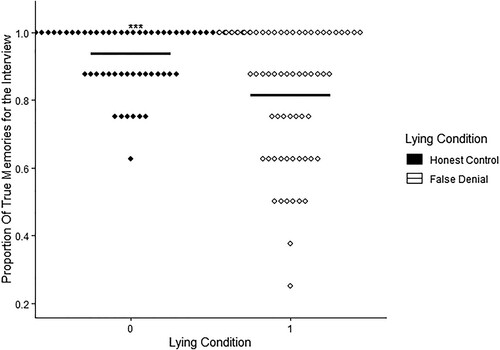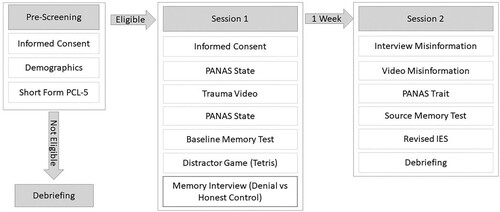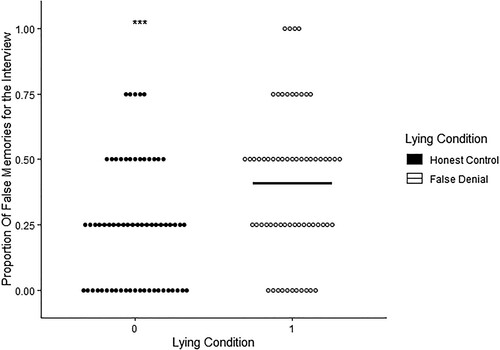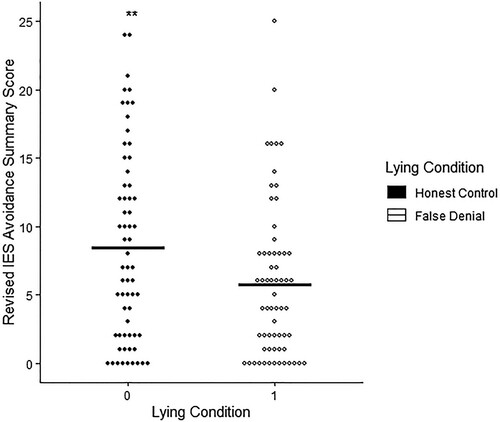Figures & data
Figure 2. Proportion of true memory for the interview by lying condition.
Note: Each dot represents one participant. Means are represented by bars. *** = p < .001.

Supplemental Material
Download MS Word (220 KB)Data availability statement
The data supporting the results and analyses of this paper can be accessed on the Open Science Framework where the data has been deposited (https://osf.io/hcunq/?view_only=08769a6c41794a419243f3edab5f3d01).



